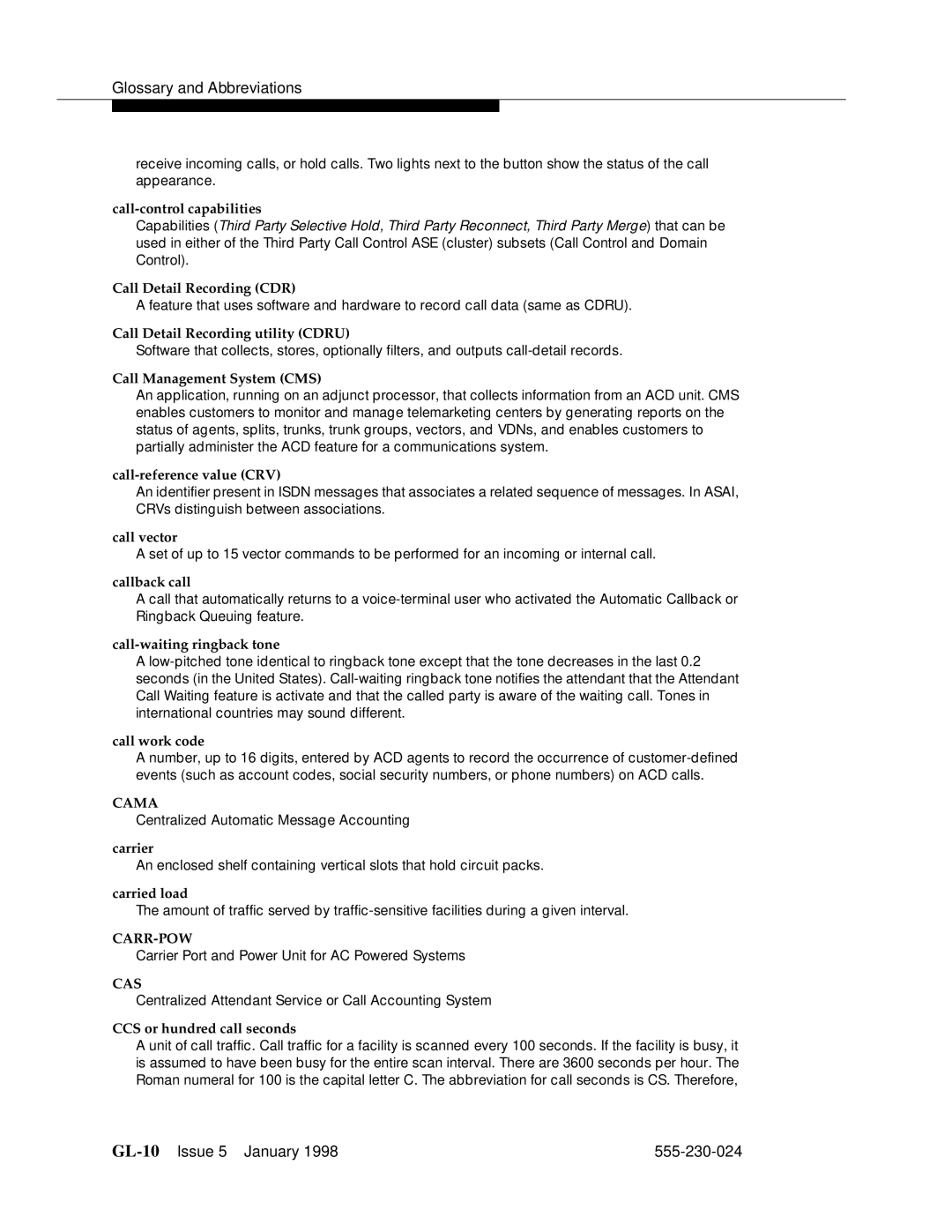Glossary and Abbreviations
receive incoming calls, or hold calls. Two lights next to the button show the status of the call appearance.
call-control capabilities
Capabilities (Third Party Selective Hold, Third Party Reconnect, Third Party Merge) that can be used in either of the Third Party Call Control ASE (cluster) subsets (Call Control and Domain Control).
Call Detail Recording (CDR)
A feature that uses software and hardware to record call data (same as CDRU).
Call Detail Recording utility (CDRU)
Software that collects, stores, optionally filters, and outputs
Call Management System (CMS)
An application, running on an adjunct processor, that collects information from an ACD unit. CMS enables customers to monitor and manage telemarketing centers by generating reports on the status of agents, splits, trunks, trunk groups, vectors, and VDNs, and enables customers to partially administer the ACD feature for a communications system.
call-reference value (CRV)
An identifier present in ISDN messages that associates a related sequence of messages. In ASAI, CRVs distinguish between associations.
call vector
A set of up to 15 vector commands to be performed for an incoming or internal call.
callback call
A call that automatically returns to a
call-waiting ringback tone
A
call work code
A number, up to 16 digits, entered by ACD agents to record the occurrence of
CAMA
Centralized Automatic Message Accounting
carrier
An enclosed shelf containing vertical slots that hold circuit packs.
carried load
The amount of traffic served by
CARR-POW
Carrier Port and Power Unit for AC Powered Systems
CAS
Centralized Attendant Service or Call Accounting System
CCS or hundred call seconds
A unit of call traffic. Call traffic for a facility is scanned every 100 seconds. If the facility is busy, it is assumed to have been busy for the entire scan interval. There are 3600 seconds per hour. The Roman numeral for 100 is the capital letter C. The abbreviation for call seconds is CS. Therefore,
